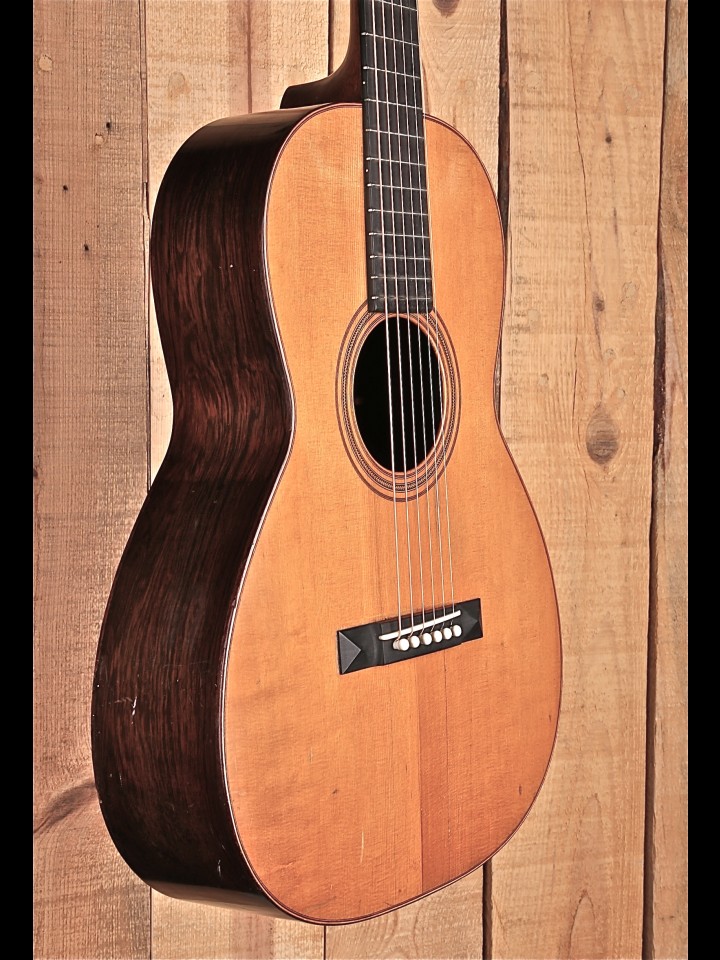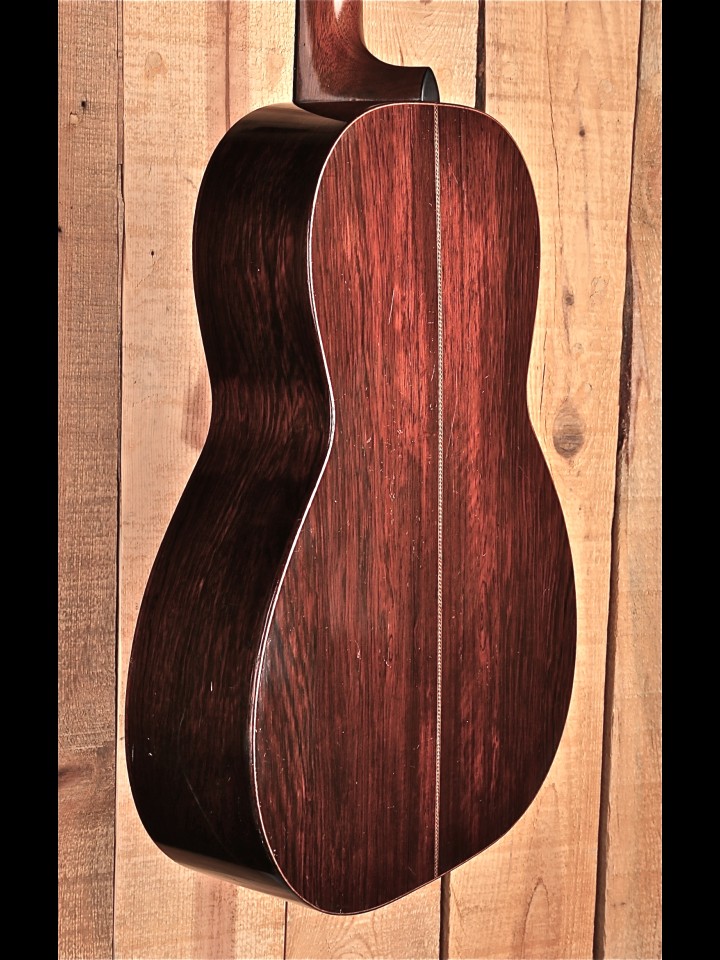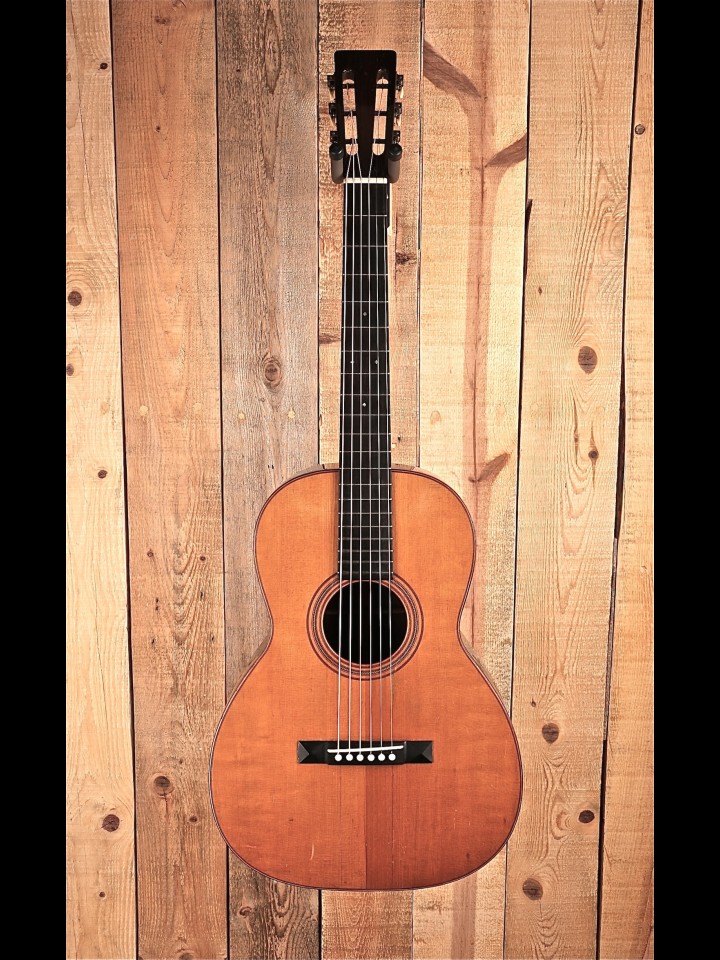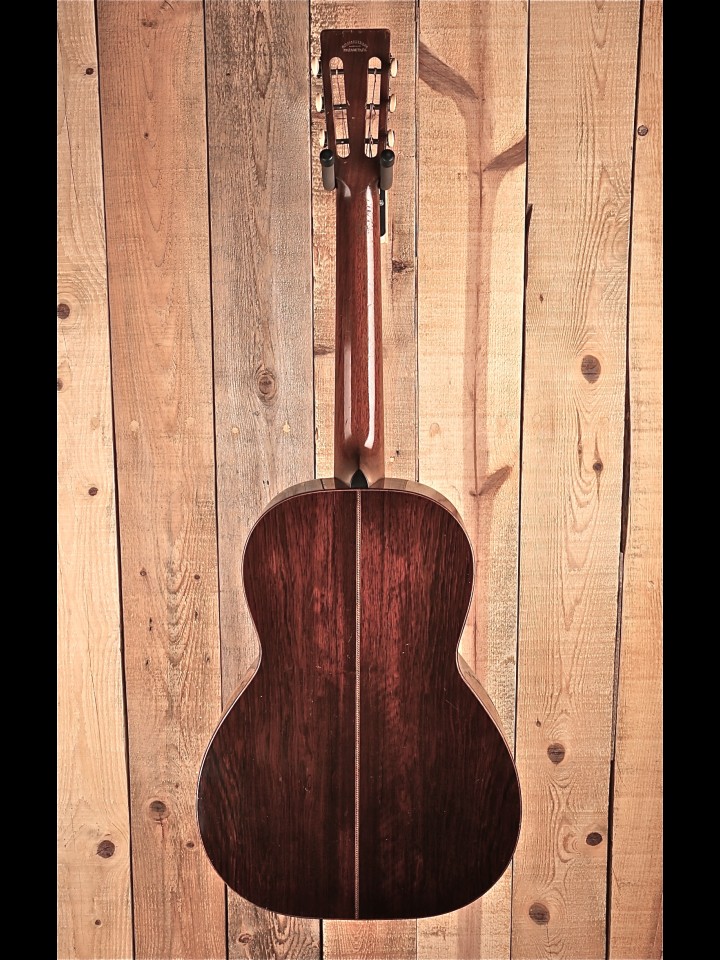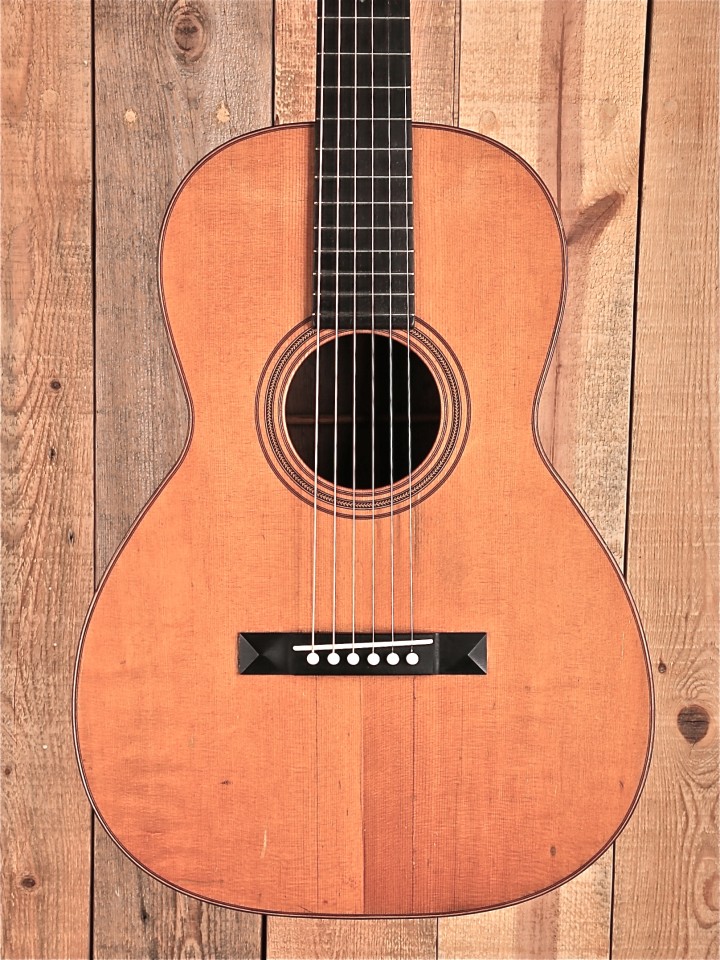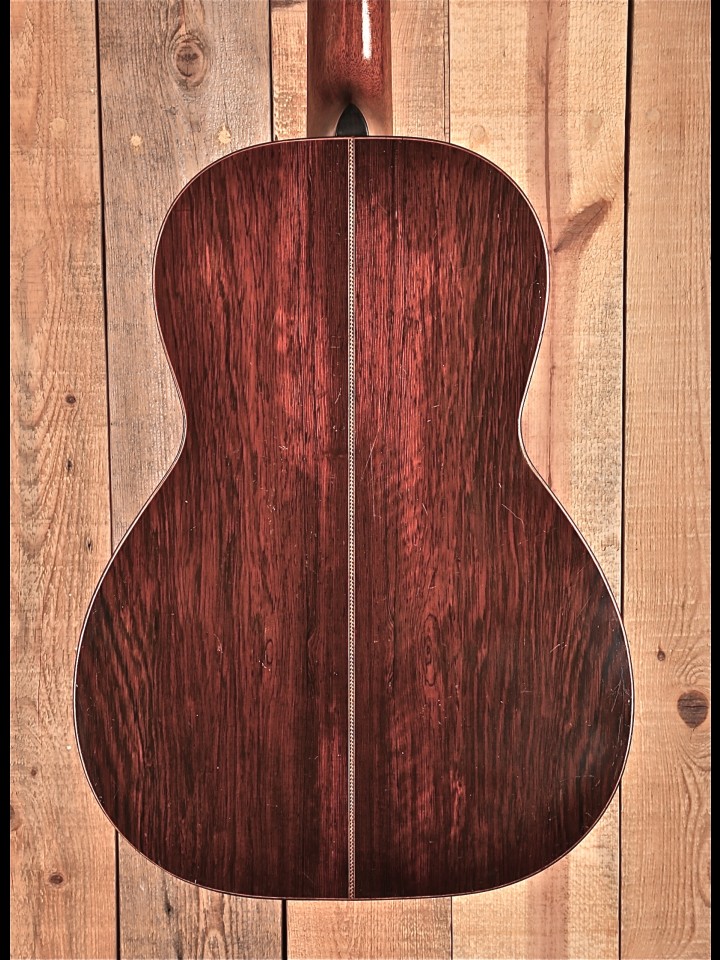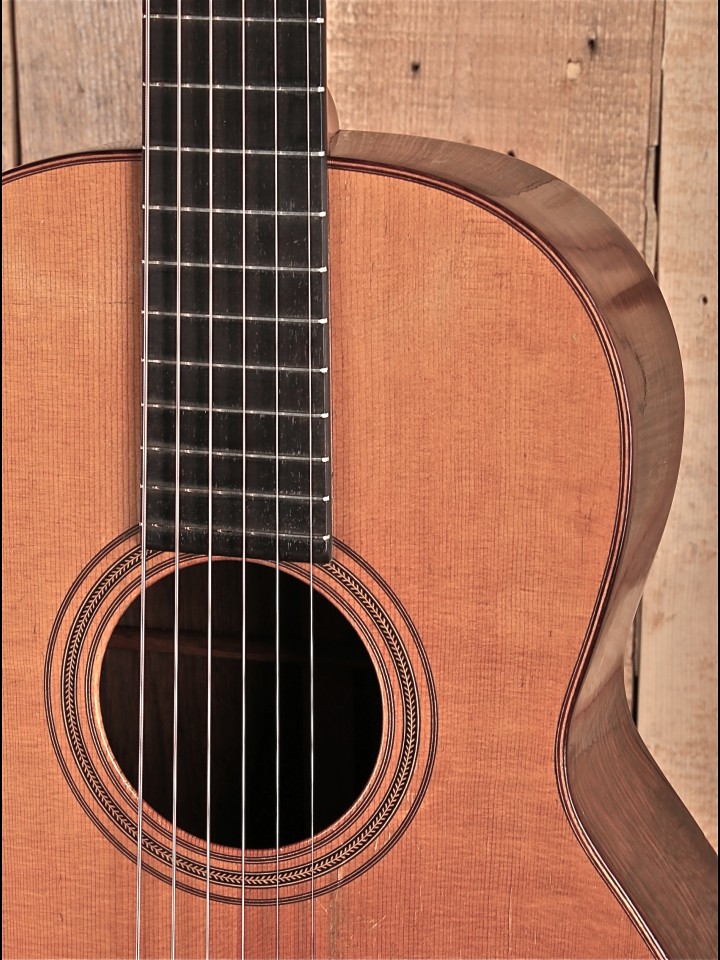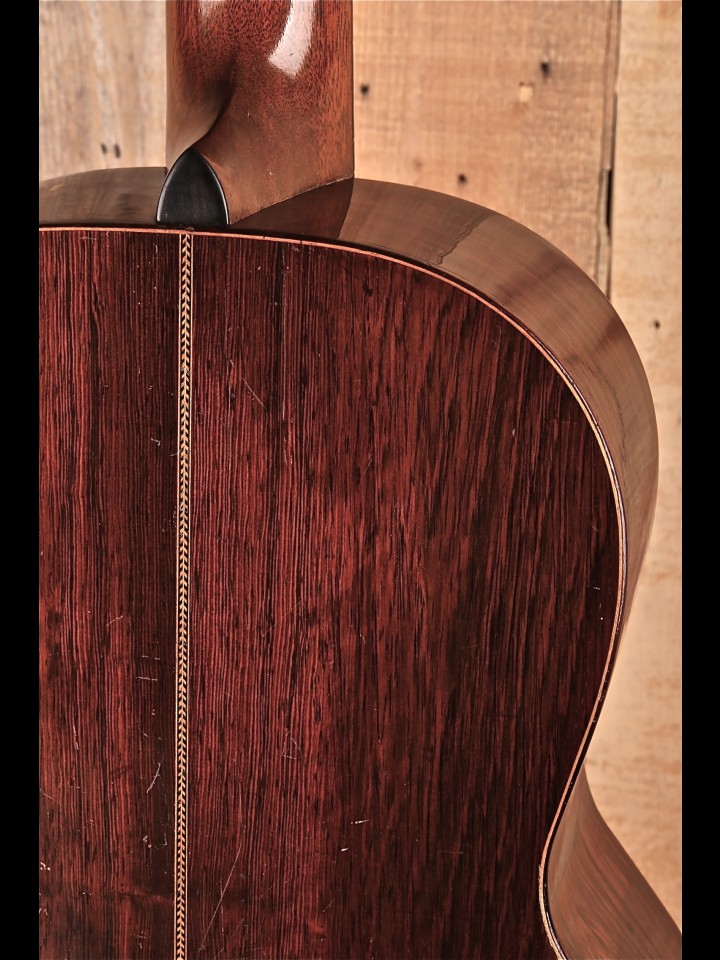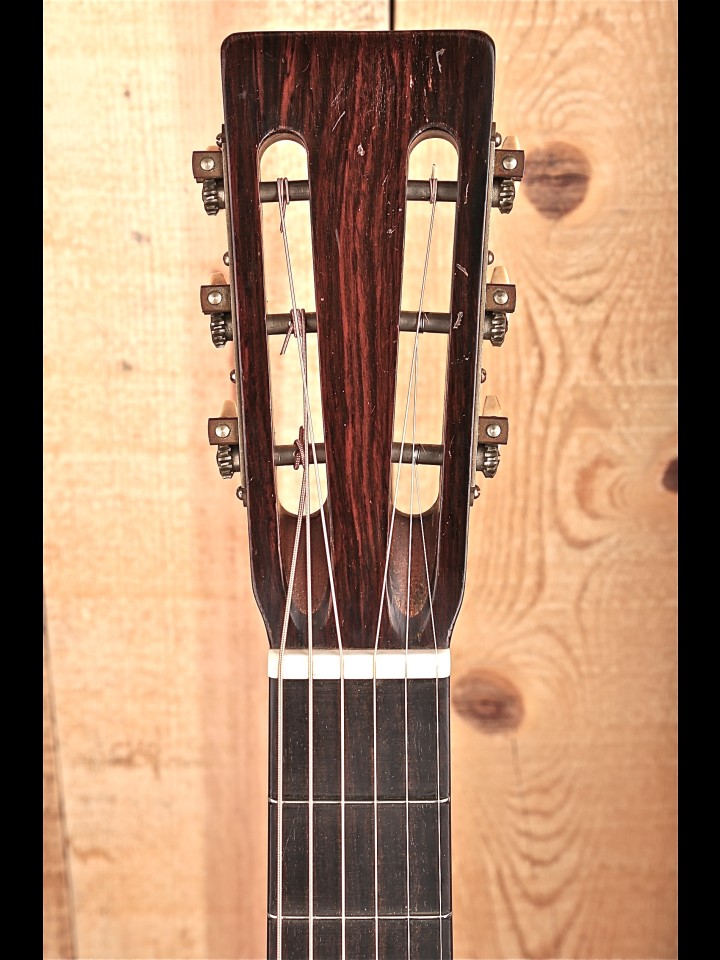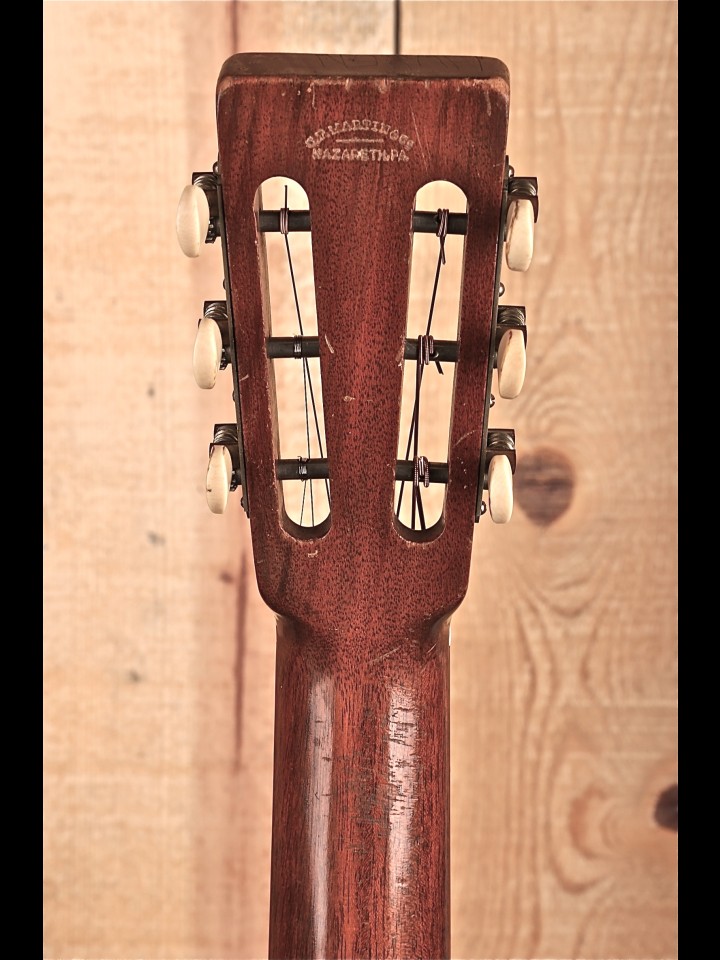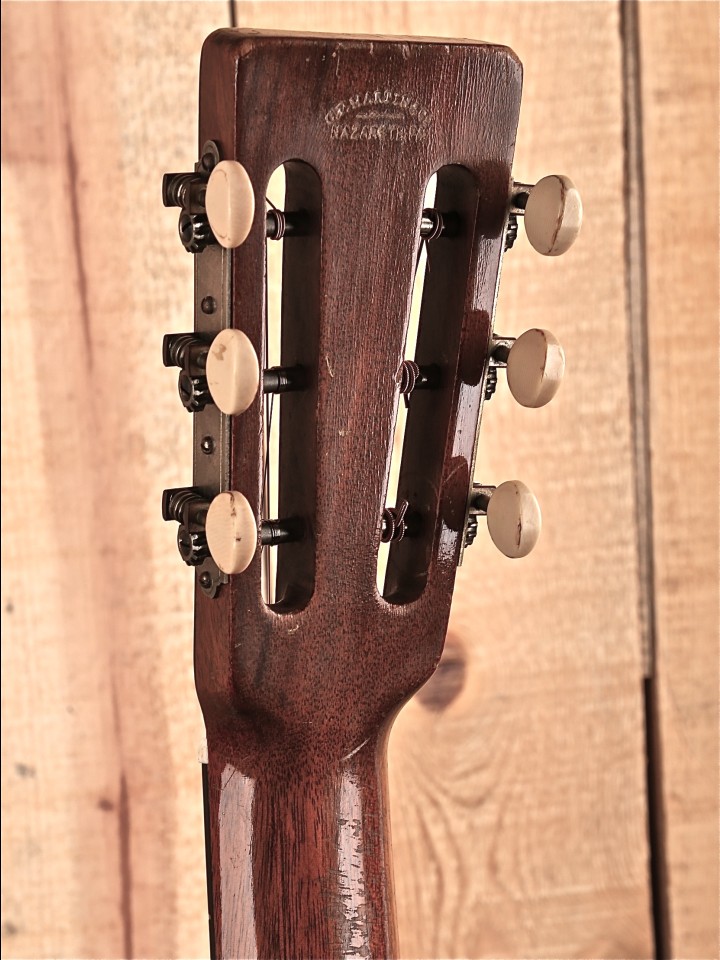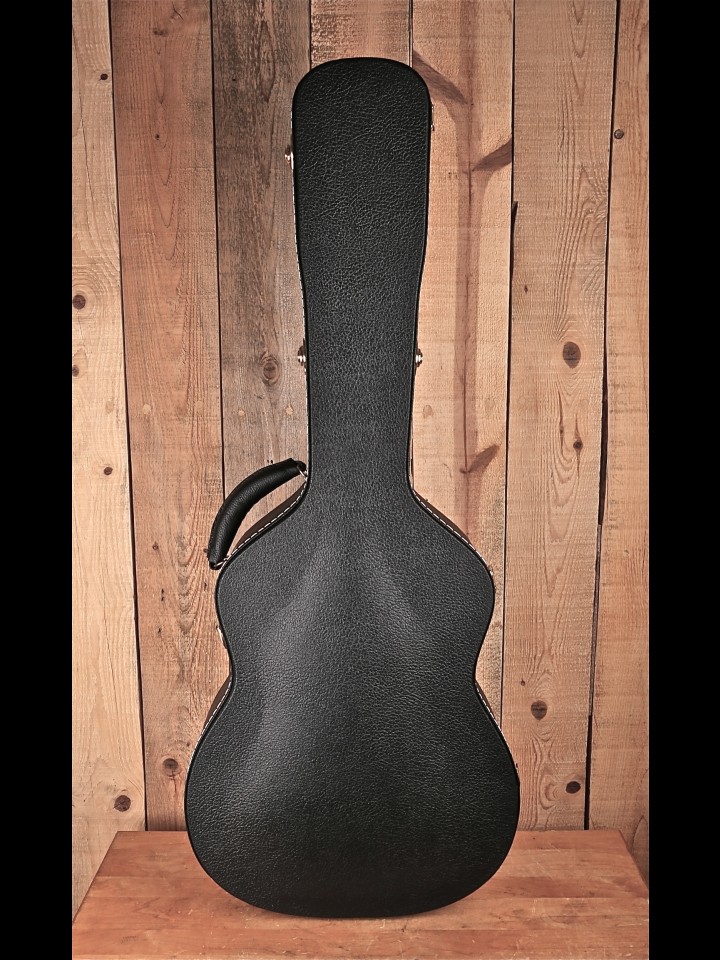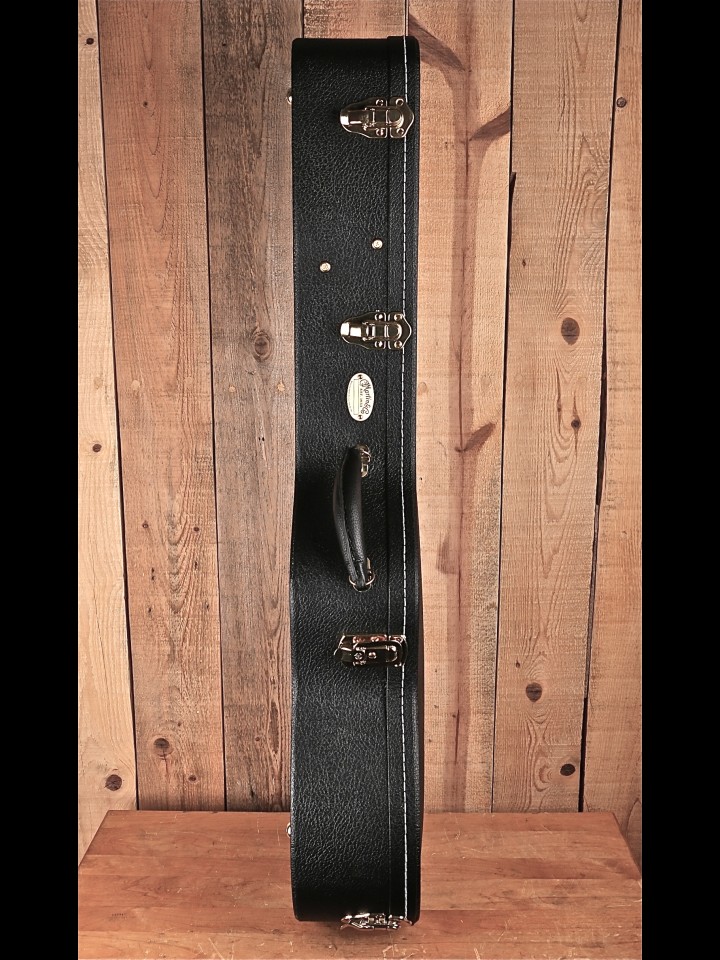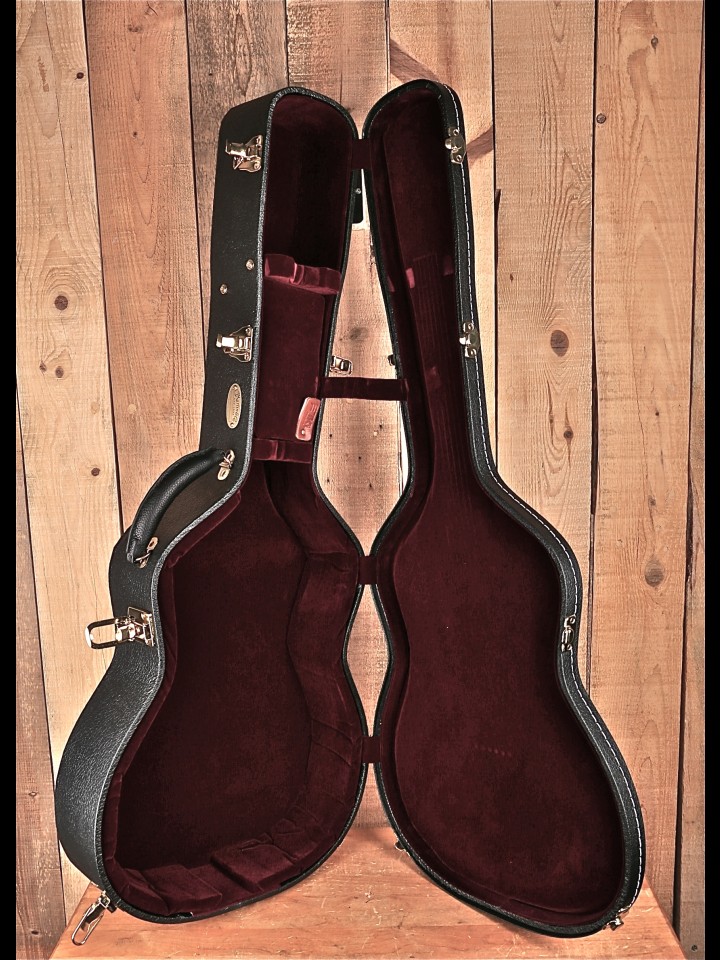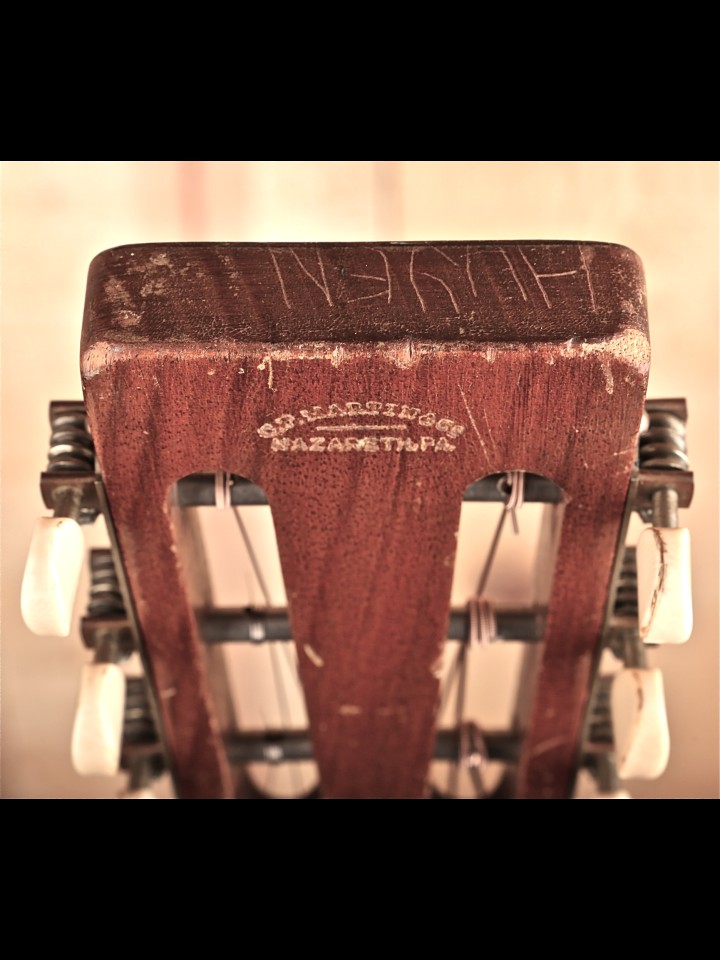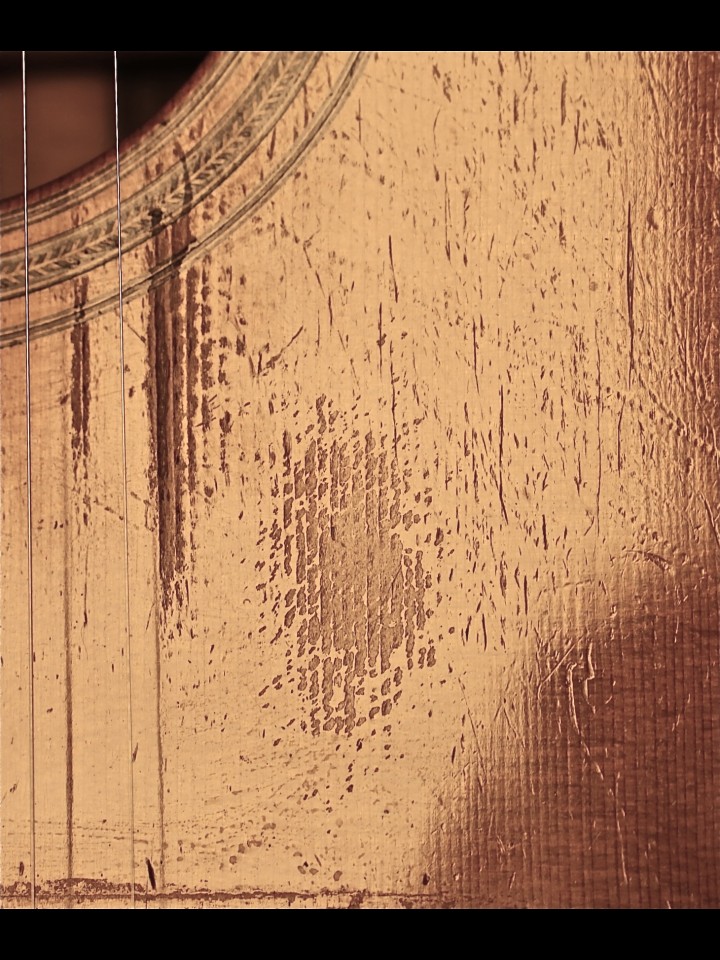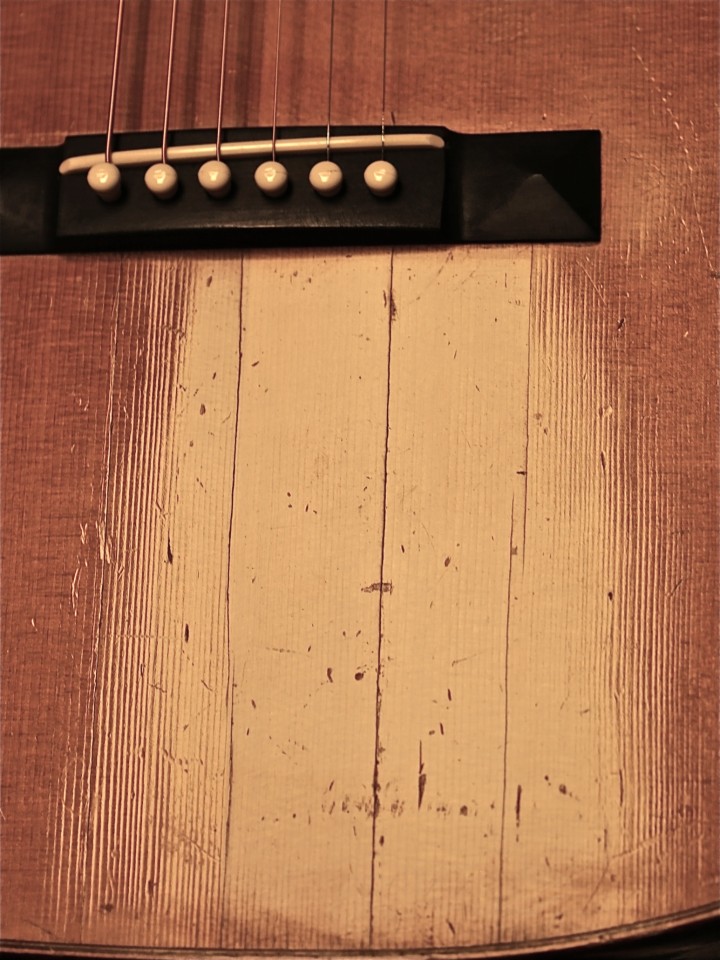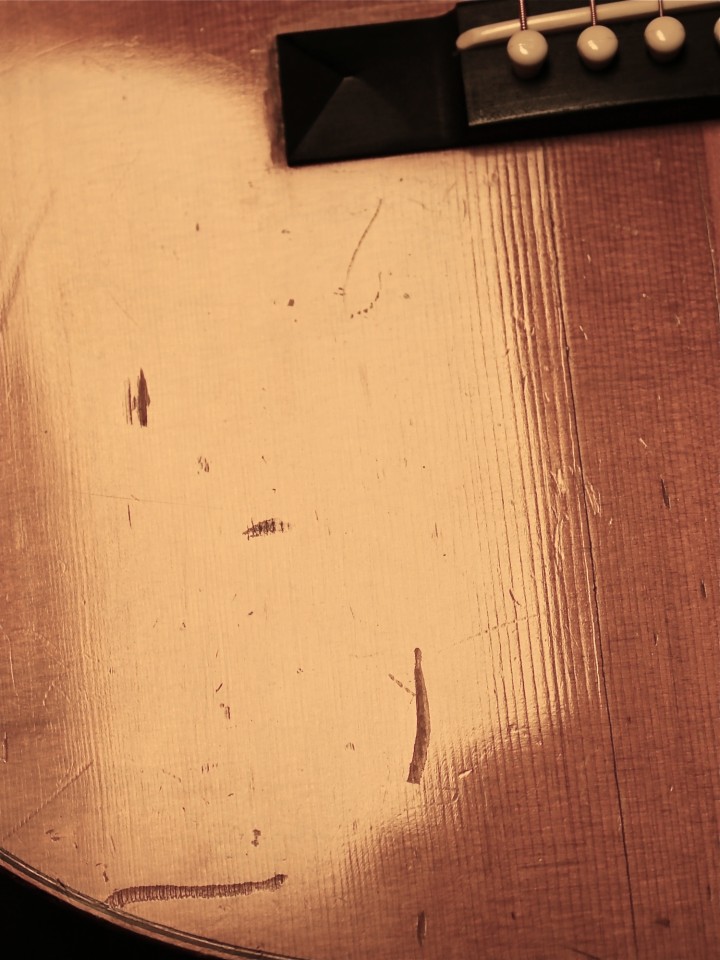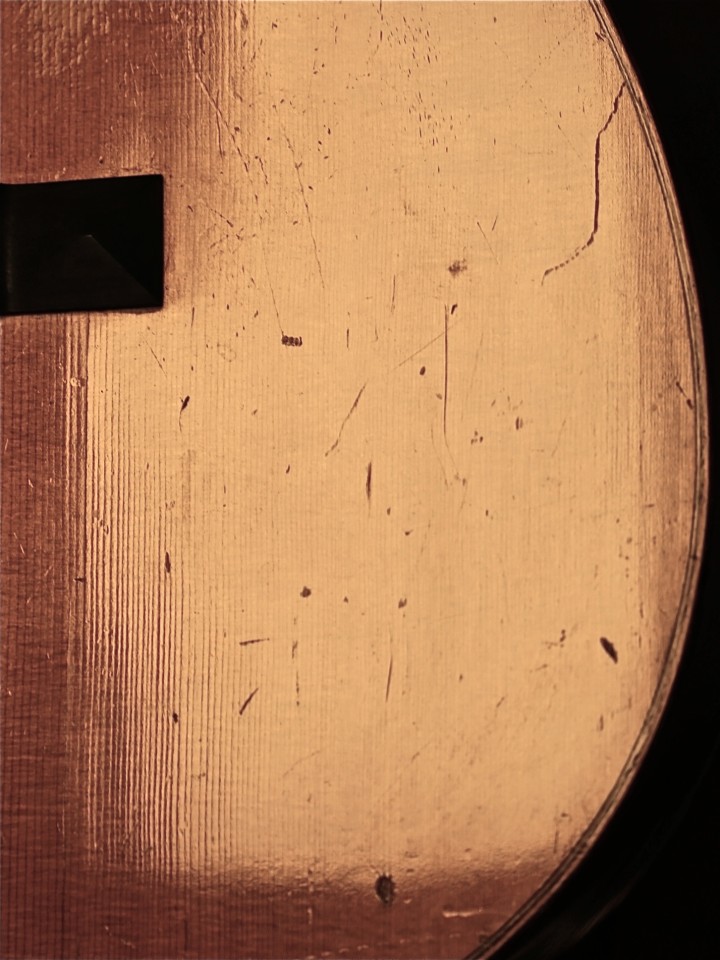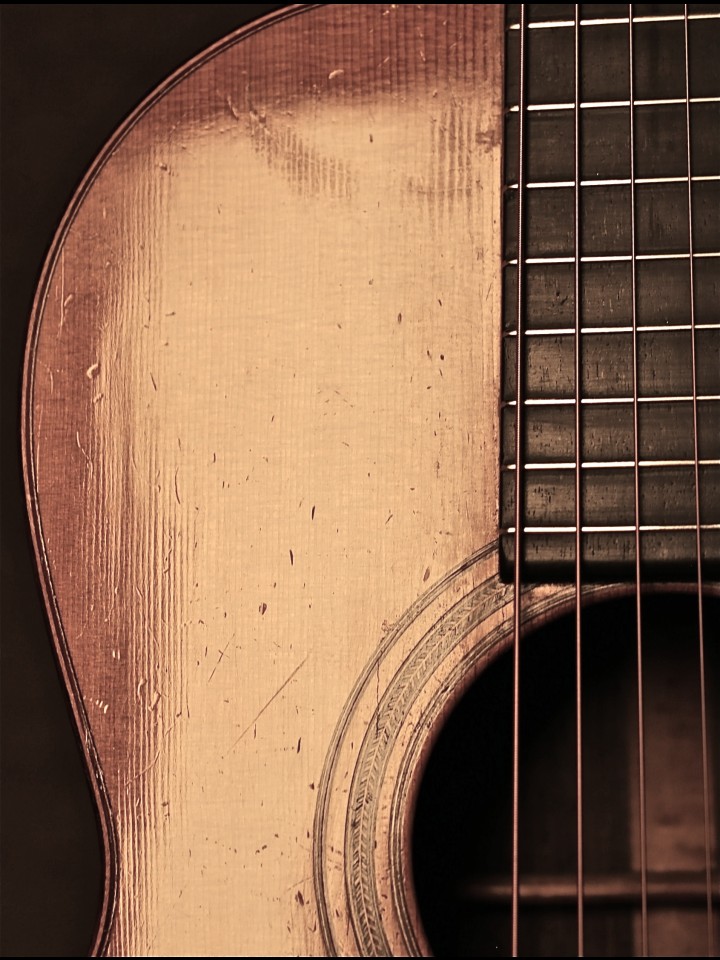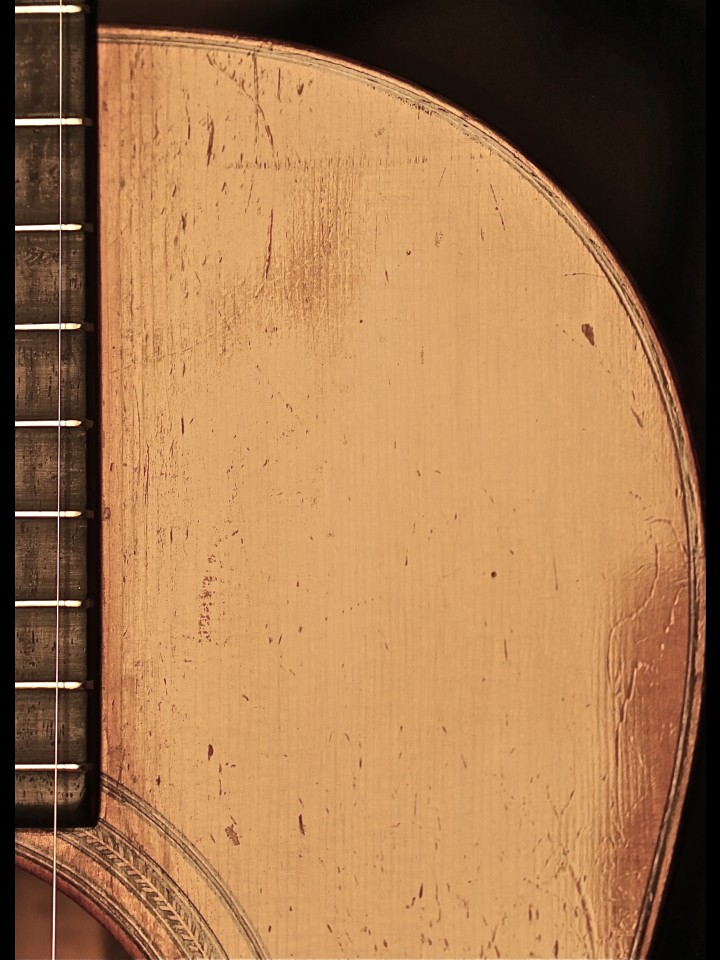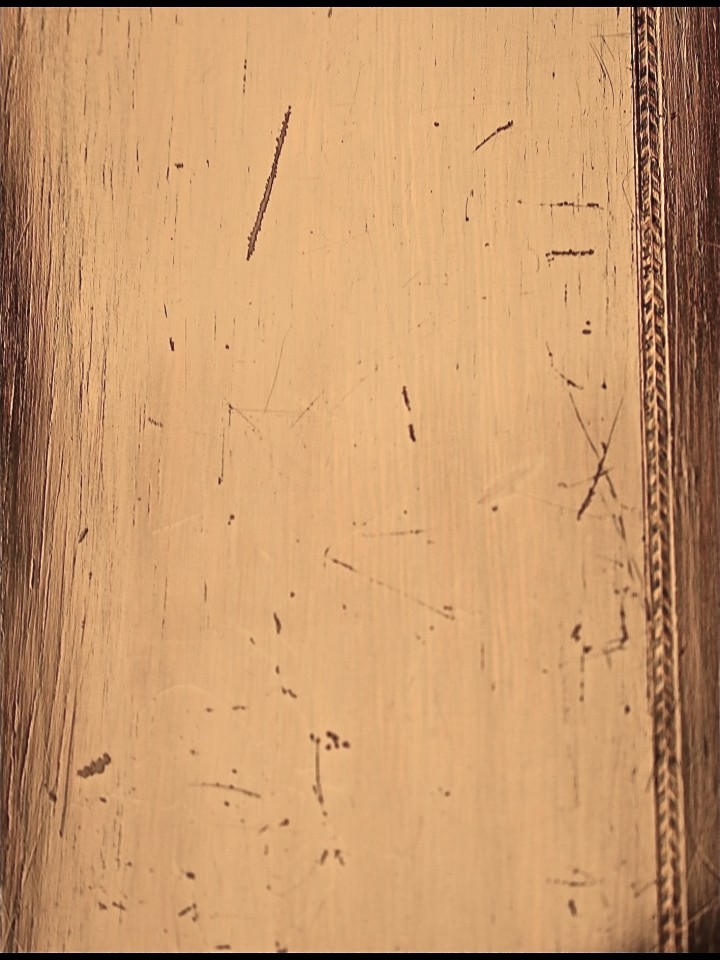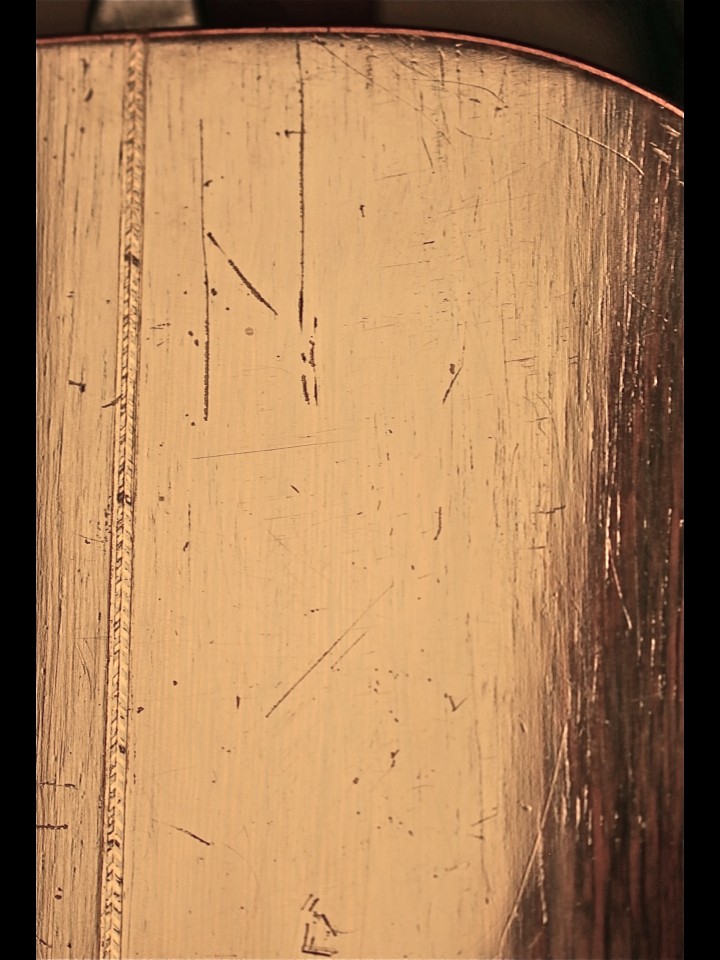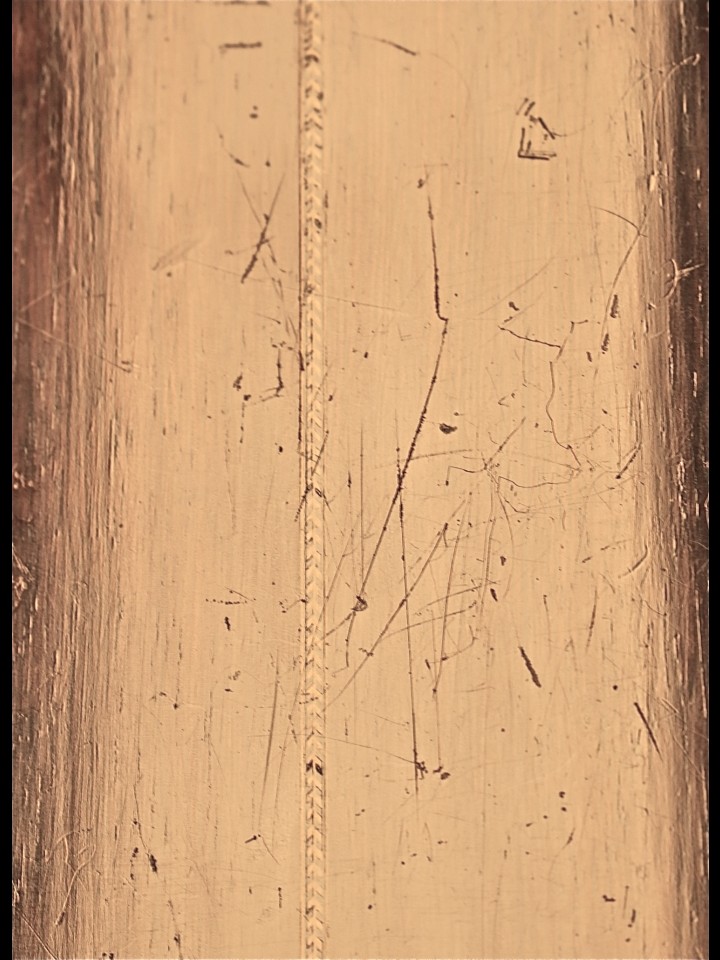1927 00-21
In the eyes and ears of many, the Martin 12-fret 00 design is difficult to improve upon. In terms of dimensions, this design most closely mirrors the proportioning of modern nylon string or “classical guitars,” which are generally voiced to achieve optimal expressiveness by way of a delicate balance between nuance and projection. For example, compared to larger soundboard templates (e.g., those of a 000/OM or a dreadnought), the more modest 00 dimensions would theoretically create focus in the treble and, in particular, the midrange, while rolling off a good deal of bass. In the context of a 14-fret 00, this snugging of the bass, mated with more pronounced mid and treble presence, might edge towards the too bright territory for some players. Yet, as we well know of 12-fret designs, the enlarged resonating chamber, along with the rear-shifted bridge placement to a more resonate area of the soundboard, translates to a voice that is inherently more open, resonant, and warm than any 14-fret counterpart. As a result, one often encounters a truly enthralling mixture of articulation and space when playing 12-fret 00s like this—this is especially true for fingerstyle players. For these reasons, it is no surprise that 00-21s like number 33603 here have been seen in the hands of players like Bob Dylan, Don McClean, Lonnie Johnson, and Josh White, to name a few.
At the time of this guitar’s production in 1927, Martin was still in the process of developing and implementing bracing for steel strings, which were rapidly becoming dominant in terms of consumer demand. Martin chose to make this transition somewhat gradually, beginning with their least expensive models (e.g., 15 and 17-Series) before making the change in their more expensive models. This was, of course, quite sensible, as any manufacturer would much rather encounter and then address any unseen endemic major structural flaw with less expensive products first! Painting in broad strokes, 1927 is considered the first year of steel string bracing in much of the Martin line, including Style 21 models, like this 00-21. (It should be noted here that earlier steel-string Martins can still be quite delicate, despite their strengthened bracing, so it is often recommended to be conservative with string tension. For example, this 00-21 could probably handle standard light gauge strings, but it is currently strung with Custom Light gauge—if tuned down to Eb or D standard, regular light gauge strings would certainly be considered safe.)
While age alone does not necessarily enhance the 12-fret 00’s unique recipe for expressiveness, one could certainly argue that this 00-21 has blossomed with the passage of time. In concert with the innate strengths of the 12-fret design and the steel string bracing, the well-seasoned Adirondack spruce top and Brazilian rosewood back and sides project a voice that exemplifies the powerful, crisp, and confident tone that we seek in vintage guitars. Indeed, this unassuming and remarkably lightweight 00 seemingly possesses uncanny acoustic reserves, springing to life with even the lightest touch. And, amidst this dry and immediate response, there is clearly-defined color and chime that one dreams of in a vintage Martin. True, tastes vary. And, in being honest with ourselves, we must ultimately set aside our individual biases to concede that there is no such thing as a “perfect guitar,” capable of doing it all. Still, as you play this charming 00-21 and feel the smile spread across your face along with that unmistakable flutter in your heart, one can’t help but wonder, “does it get any better than this!?”
Condition
For an instrument of its age, this 00-21 has survived quite well, particularly in light of a protracted period of basement storage in a less-than-optimal and poor-fitting chipboard case. Yet, the guitar was definitely in need of some major work when it first darkened our door. As is quite common for any guitar of this age, the neck had crept forward over time and needed to be reset. Fortunately, the original bar frets had healthy mass and simply needed to be glued in at various points and then re-leveled and re-crowned after the neck was re-angled. There were a number of obvious cracks that needed to be addressed, including a minor back crack but, most significantly, several top cracks running from the butt of the guitar to the bridge, with a couple of these extending beyond the bridge to the soundhole. We noted that a few of these were already cleated with strips a little larger than one might prefer, but as these pre-existing repairs were stable, we elected to leave them in place. As a likely consequence of the top cracks, some top braces had popped loose and have since been re-glued.
In addition to these more common issues, a 5 1/4 section of the rosewood binding was missing along the treble side of the back near the butt. A section of appropriately convincing Indian rosewood has since been spliced into this area. Here, we also see a 5” back crack that may likely be associated with whatever event caused the missing binding—this crack spans the distance between the curve near the edge of the lower bout. More significantly, the original bridge was missing and had been replaced with an ugly alternative which had also been screwed into place. A replica bridge has since been installed, and the screw holes have been doweled. On a related note, the original bridgeplate is still in place. But, not surprisingly, it exhibited a good deal of wear after so many decades, so it has been properly doweled with maple plugs and re-drilled. Apart from the repaired cracks, the bridge replacement, and the discreetly spliced binding, the remainder of the guitar is in fairly clean cosmetic condition, exhibiting only the minor dents and scratches that one might expect after a century’s worth of periodic use. VERY GOOD Condition
- 12-Fret 00 Body
- Adirondack Spruce Top
- Scalloped Adirondack Top Bracing
- Brazilian Rosewood Back and Sides
- Brazilian Rosewood Body Binding
- 4-Ply Wood Top Purfling
- Fine Herringbone Back Strip
- 3-Ring Rosette (5-Ply Outer Rings with Herringbone Center Ring)
- Brazilian Rosewood Endpiece and Heelcap
- Mahogany Neck
- Modified V Neck Profile
- Ebony Fingerboard
- 20 Bar Frets
- MOP Short Pattern Slotted Diamond Fingerboard Inlays
- Brazilian Rosewood Headstock Veneer
- “C.F. Martin, & Co. Nazareth, PA” Stamp on Headstock Rear (and Center Strip)
- Replica Ebony Pyramid Bridge (Original Bridge Not Present
- White Plastic Bridge Pins
- Waverly Tuning Machines with Ivoroid Buttons
- 24.9” Scale
- 1 7/8” Nut Width (New Nut Equals 8.25 mm String Displacement Corresponding to Modern 1 13/16” Width)
- 2 5/16” String Spacing at Bridge
- Martin 12C525C Geib Style Arched Top Case (New)
| Brand | MARTIN |
| Model | 00-21 |
| Serial Number(s) | 33603 |


